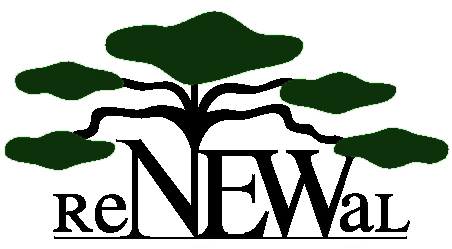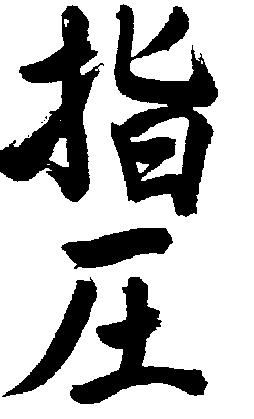







Chronic Pain Therapy Structural Repatterning

What is Structural Repatterning?
Potential clients often ask me to describe my style of bodywork. I created the term Structural Repattering to describe how I use massage, Shiatsu and Anma techniques to help retrain the client's body. I work with them so they can let go of ingrained patterns that are causing or holding onto pain, and re-learn healthy patterns of movement that will allow them to function in a pain-free manner.
What does Structural Repatterning do?
Structural Repatterning is a philosophy of bodywork that focuses on changing how my client's body moves. While most forms of massage focus on the placement and contraction of muscles, Structural Repatterning focuses on the joints. Joints are designed to move and to be moved by muscles. If there is not movement in a joint, the muscles are not working properly and Structural Repatterning works to remedy that.
Three Phases of Structural Repatterning:
PHASE ONE - Disengagement: This is finding a joint which does not move properly and then working to "unwind" the muscle or muscles that move or act on that joint. Simply put, this is discovering where the body does not move properly and then working the tension is out of the muscle or muscles that control it. In some cases contact is all that is necessary. If contact and a gentle reminder to relax is not enough, some pressure can be applied to help the client's body feel what needs to relax. Squeezing or kneading a muscle that is not working properly can help, too. I make as much progress here as I can and then move to PHASE TWO. Most forms of massage and bodywork work in PHASE ONE.
PHASE TWO - Isolation: This is moving a client's joint for them through a particular vector without allowing their body to tighten, help, or resist back into the tension pattern. This is the core idea of Structural Repatterning and what makes it truly unique. Isolation is a method of choosing a particular vector on a joint that is not moving and not allowing the client's body to tighten or resist back to PHASE ONE. Ideally, I'd like to be able to isolate any joint so that I can move it for the client without them helping, resisting, or feeling pain. Clients have referred to this as feeling like a rag doll and it is much harder for them to do than it seems like it should be.
Finding a vector that does not move is done by gently pushing into the client's body. In a healthy body, pressure on a joint causes the joint to move. Pressure between two joints should cause the joints on each side of the pressure to move to accommodate the impulse. Either way, the body should always be able to comfortably absorb reasonable pressure. Impulses can be applied many ways. A thumb or palm can compress directly into the body. Impulses can be applied to rock so that the client's body moves around a central point or line. This is usually done with a palm. An impulse can also be applied so that the vector being applied will go through the body and come out the other side. I use this the most and I can apply with thumbs, palms, knuckles or even knees or elbows. Finally, pressure can be applied to elongate or separate parts of the body. This can be done with traction by gripping and pulling or by pressing with thumbs or elbows at the joint to make the bones of the joint separate. This can be done at the shoulder, hip or sometimes the spine.
After finding the vector that has resistance, coaching is used to help the client to relax. As gentle pressure is being applied, invite the client to passively relax. I use words such as drop, sink, relax, collapse, hang, slump or elongate. The client must not help or force the motion being requested because that will cause muscle contraction, preventing relaxation. If gentle pressure and request is not sufficient, slightly more pressure or more focused pressure such as moving from a palm to the heel of the hand to a thumb to a knuckle can be applied. Tapping the region where the vector would exit the body can help the client's mind figure out what place needs to relax. If a seemingly unrelated part of the body is seen to tense, that should be mentioned to the client as well. If the client is tight throughout their body, then the coaching should start by asking the extremities furthest from the point of pressure to relax and work your way to the point. By the time you reach the point that you are applying, often the resistance will be gone since the supporting network has been coached away. Should all this prove insufficient, bracing should be applied near where the vector would exit the body to create a slight space. This helps the client's body to feel an opening that it can drop into passively. I use one hand to apply the gentle pressure and the other to pull or lift the exit point off the table while tapping with the finger of the bracing hand and coaching the client to drop at that point. Care should be taken to make sure the joint is isolated between the pressure and the brace so that only its relaxation will release the pressure.
After the client has released, you will notice that their body moves further with the same impulse and/or that you will need less pressure on the impulse to get their body to move the same distance. Often, you can start with a large region of immobility or difficulty that relaxes into smaller regions that have their own sets of needed vectors. As each set of vectors is released and the client's body can be moved easily, we move on to PHASE THREE.
PHASE THREE - Movement: This involves the client learning to consciously move their own body at that joint or region without causing the tension pattern that is creating pain and/or immobility. PHASE TWO is about passive movement where the client allows you to move their body into whatever direction you find that they need. PHASE THREE is about the client figuring out how and what it feels like to move their body while relaxed and without tensing muscles that aggravate their pain. Ideally, after PHASE TWO is done, there should be no more pain and the client should be able to move freely. If that is the case, they should move repeatedly, but gently, to ingrain the new pattern on their mind. After a treatment, I recommend to clients that they take a nice easy walk for a while and focus on feeling the (new) way they move. It is important in the retraining not to move with too much effort or endurance. Do things that are easy and comfortable like walking and avoid working out or hurrying back into stress because that will encourage their body to revert back to the previous familiar pattern.
If the client is not able to move without pain, I return to PHASE TWO with bracing, but without pressure. With me supporting the client's body, they should be able to relax without pain. Then, slowly, ask them to increase resistance to take the support from you. Care needs to be given that they focus only on the specific motion and not on clenching the area around it. I tap and coach to keep the rest of their body loose as they try to move just the one place. In this way, I can move among the three phases to get my clients relaxed. Then the client relaxes all the way. I repeat as necessary until the troublesome muscle quits responding.
AFTERCARE
A client that has successfully completed Structural Repatterning needs to do homework. Principally, it is important to learn to move while relaxed so that you can feel the difference; plan on regular, easy, relaxed movement like walking. If a client does not know what it feels like to be relaxed, how can they expect to get that way? Likewise, if they don't know what they have to do to become relaxed, it won't work either. It is important to slowly strengthen, but only when relaxed and pain free. The easiest way to strengthen is to repeat the movement from PHASE THREE until it is re-learned properly. Physical Therapy is great aftercare, but only if it is done while relaxed. I'm convinced this is why some people do not succeed with PT; they haven't learned how to be moved and then move without the old pattern that is causing problems.
23 SE 4th Street, Suite 211
Minneapolis, MN 55414
612-821-1188
© 1994-2011 Renewal Therapy All Rights Reserved
Structural Repatterning
Shiatsu and Anma Massage Studio
23 SE 4th Street, Suite 211
Minneapolis, MN 55414
612-821-1188
